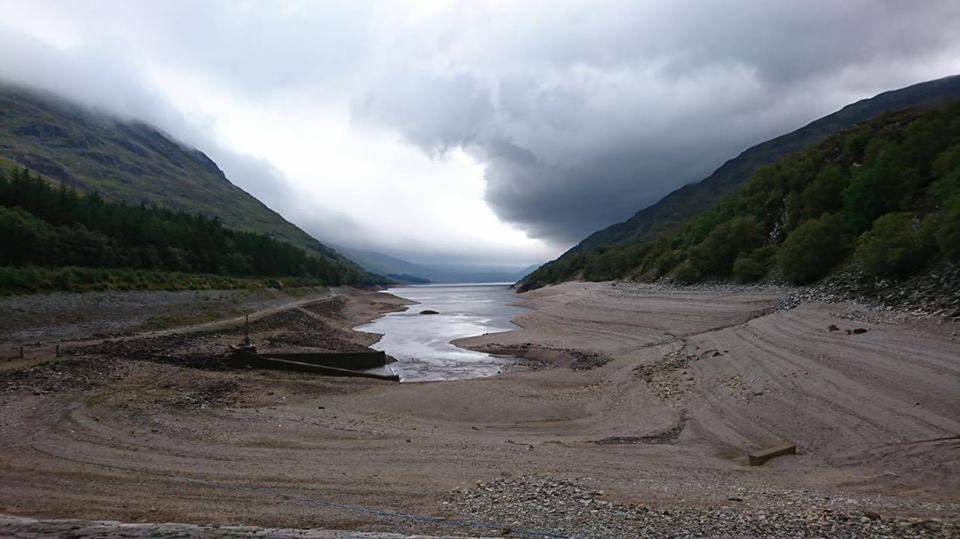
Hydroelectric power generation features prominently in the firmament of the renewable energy icons of the ‘green movement’ and indeed among its most avid supporters, there is almost a zealous fervency about it, bordering on religiosity about its promulgation, indeed one tantamount to a holy dictum of hydro.
There is no doubt, in a political environment where there is a near obsession with Carbon Dioxide emissions, that hydro power generation has much to offer in its mere use of gravity and rainfall to produce electricity at peak demand times, though its capacity to provide baseload falls well short of other, especially fossil fuel, sources. An easy check can be realised at www.gridwatch.co.uk
However it is not the purpose of this piece to debate the relative capacity of different fuel sources to produce, at the national level, dependable, predictable electricity in strategically viable amounts, but merely to question, especially among environmental activists and politicians, the presumption that hydro-electric power is uniquely benign and comes with little or no environmental downside or negative consequences.
In saying that, the ‘horrors’ of hydro are often far from being hidden, especially if you have been a frequent traveller on the Perth to Inverness section of the A9 or adjacent railway, as they traverse the section up Glen Garry from Blair Atholl to Drumochter Pass and you’ve contemplated the trickling skeleton of the River Garry that once flowed constantly from Loch Garry, with its associated salmon-producing headwaters.
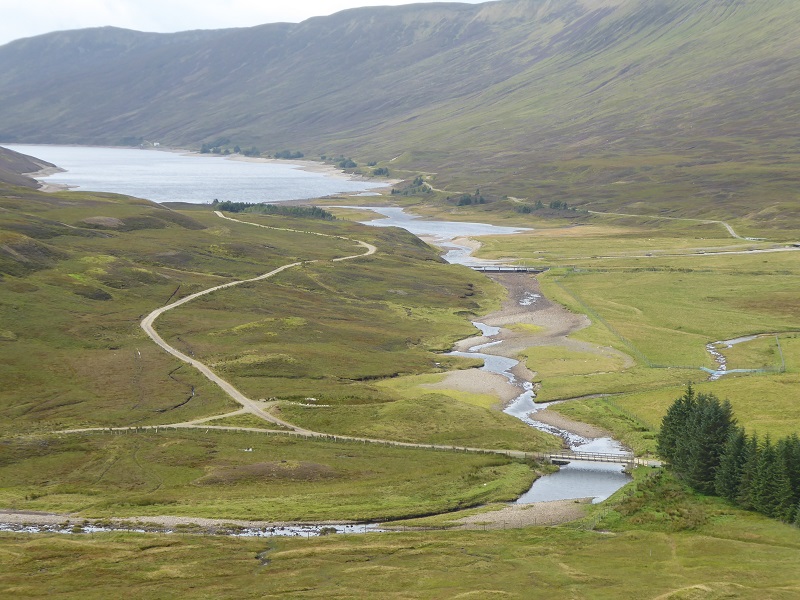
Hardly an enhancement of visual amenity is it? Beyond that initial impression, we can only contemplate the scale of the loss of many miles of natal and nursery areas in terms of salmon production incurred after the early hydro impoundments in the late 1930s and subsequent developments in the wider catchment in the 1950s. That loss is not merely a financial one, inherent in losing the massive spring salmon (with their high catch value), that came from natal areas in the upper catchment, but is also one of the biodiversity loss of unique local sub populations and systemic biological productivity from the ‘living fertilisers’ that ascended the streams to feed predators and scavengers, including the aquatic invertebrates that in turn became the food of the next generation of juvenile salmon.
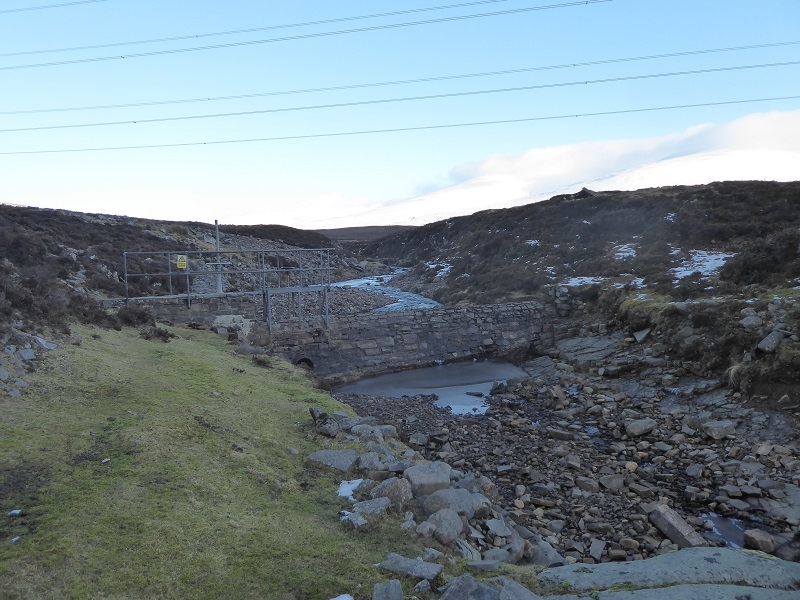
We cannot recover that loss, but after many years of lobbying by various organisations and individuals, there has been a glimmer of hope via action taken by SSE, to restore salmon access to parts of the River Garry, bereft of salmon for many decades. Metaphorically and literally, however, miles of work remain to be done.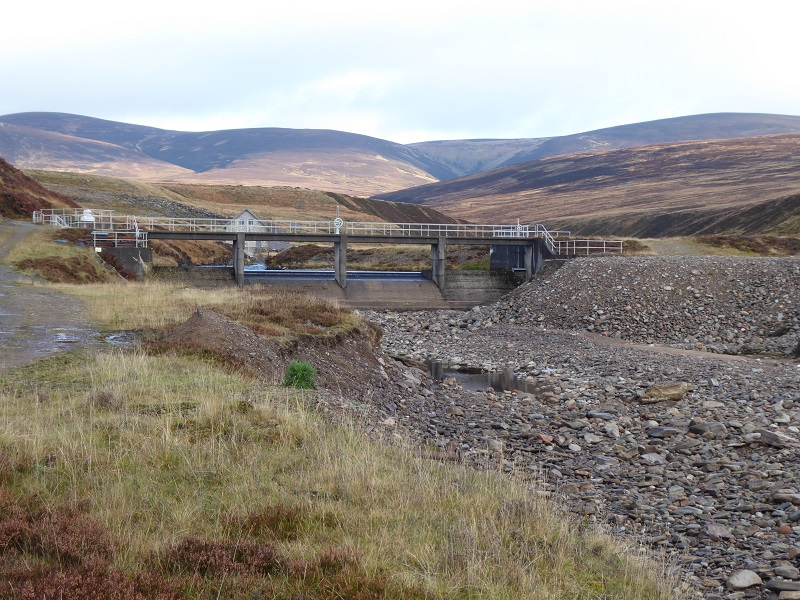
The dried up river Bruar below the intake that abstracts its waters into the Tummel Hydro scheme. At least the run of river hydros – Bruar powerhouse visible behind – are designed to keep some water flowing along the river.Concrete dams, though many of them were laudably fitted with fish passes, and dried up, erstwhile spawning areas, attest to the impact of hydro-electric power generation on many of our salmon rivers. There has been considerable research effort expended on assessing and dealing with some of these riverine impacts, but what about the ‘mother’ lochs these major hydro developments are based upon?
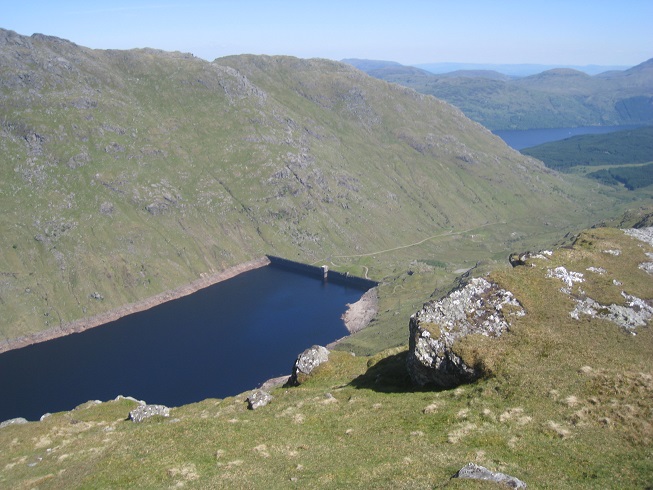
Here, there is not so much a gap in our knowledge, as a chasm. Until recently we had to rely on the analogies of the classic before and after studies in the great Scandinavian mountain lakes, especially those of Dr N.A.Nilsson , Dr. Per Aass, Dr. Ulf Grimas, and a few home based studies, such as those of Dr.Hugh Elder and Dr. Niall Campbell, some half a century ago. These former indicated after a brief biological ‘boom’ there came a ‘bust’ of profound negative, and wide- ranging impacts on the physical and biological environment, including the development of the classic moonscape shoreline that creates the sense of looking at an aquatic ‘desert.’ This ‘aquatic desert’ look is of course shared by our own reservoirs, and the inference from the small amount of home-based research is, that despite a very different annual water fluctuation regime, these profound negative impacts most likely also applied and still apply here.
The absence of before and after studies of the impact of hydro-electric regulation of lochs in Scotland has several root causes, a main one being, that unlike the otherwise reasonably comparable Scandinavian ones, there was no equivalent tradition of inland commercial or subsistence fisheries that might be affected when a natural lake is converted to a hydro-reservoir. The extensive Scandinavian research literature reveals a litany of profoundly negative changes on the physical environment, more especially in the productive littoral ( shore) zone, resulting in major deleterious changes in the biological environment, especially on aquatic vertebrates; thence the various fish species dependent on them and consequently, of course, the commercial, subsistence and recreational fisheries concerned. Apart from the massive loss of productivity (well over 50% of littoral bottom-living invertebrates), there can be changes in the balance of fish species and indeed inter-watershed transfer of locally non-native fish species( with all the inherent potential problems that may arise).
We’ll probably never know the full biological impacts of hydro-electric impoundments of Scotland’s large glacial ribbon lakes( e.g. Rannoch, Ericht, Treig, Laggan) simply because we had no substantial data base prior to the impoundments. However recent research has revealed that they contain native fish populations (mainly Arctic Charr and Brown Trout) that exhibit some of the most remarkable vertebrate biodiversity anywhere in the British Isles.
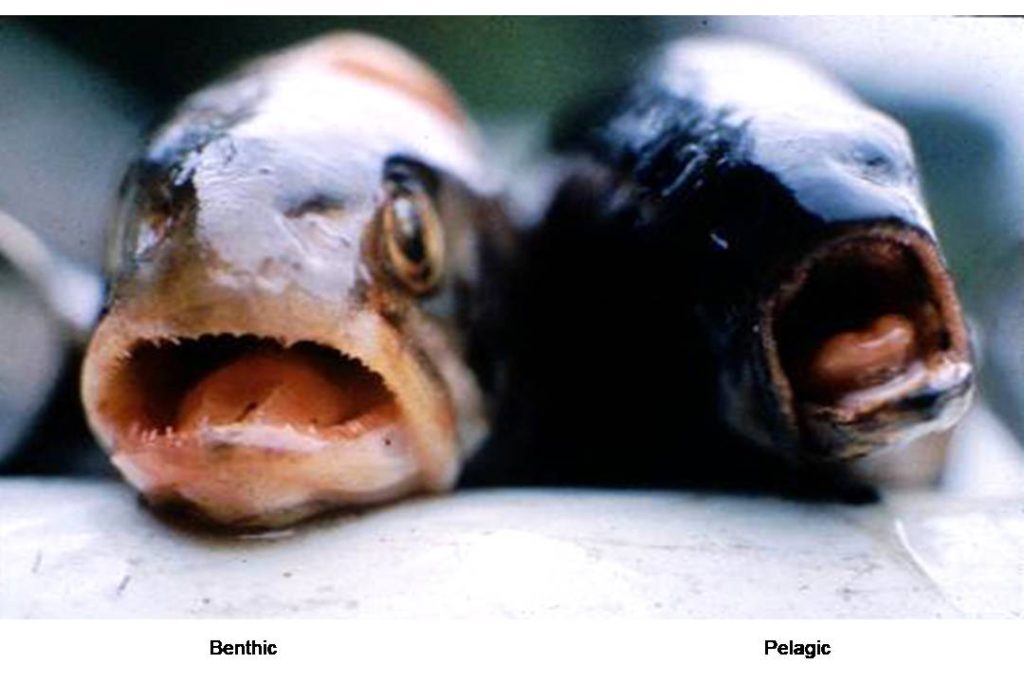
It’s probably just serendipity that they have survived the process of impoundment so far, but it’s a process that’s ongoing in a political environment favouring state-subsidised renewable power generation and that seems to be unaware, and indeed appears uncaring, about the ecological impacts.
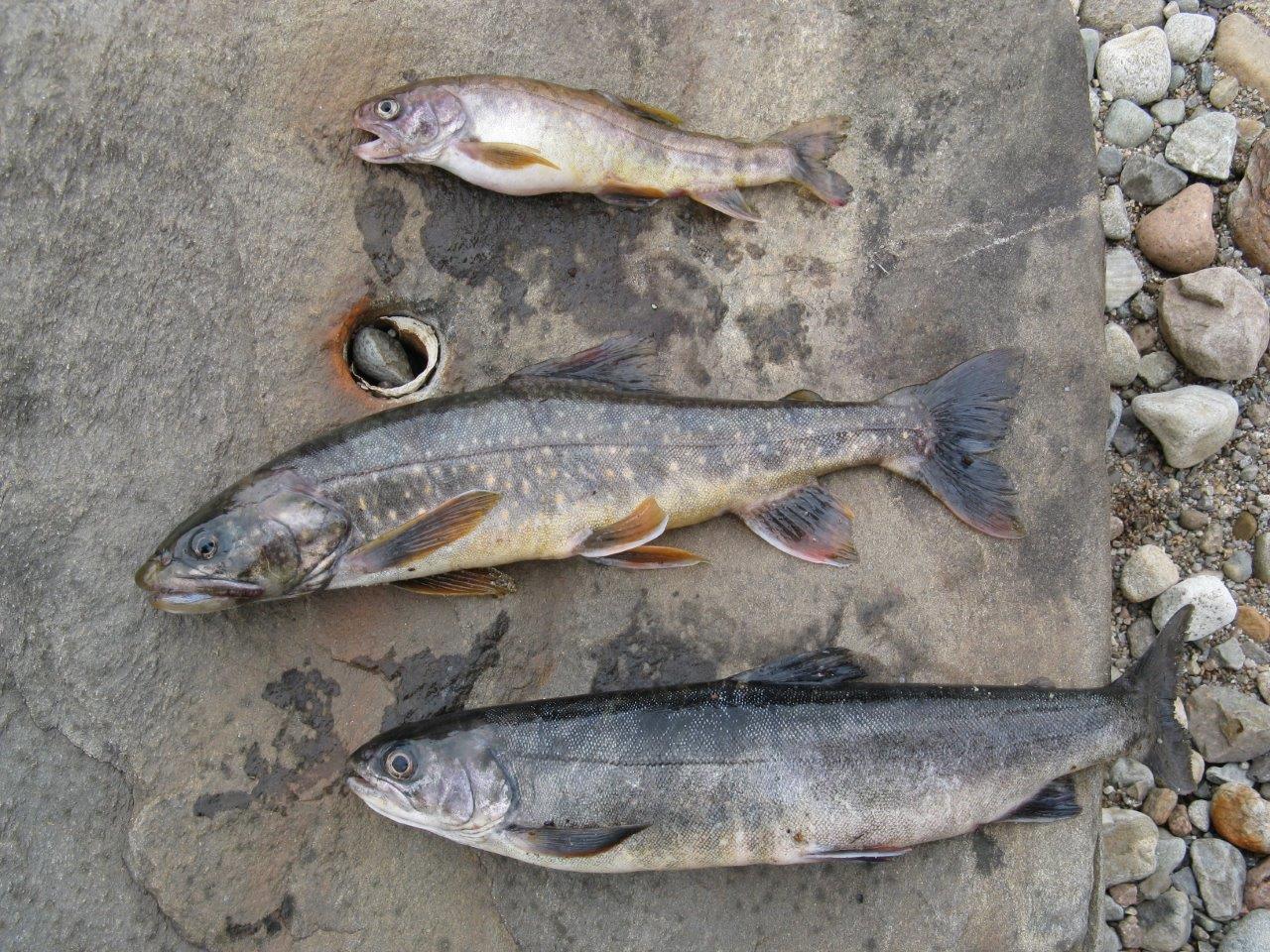
The freshwater science establishment in Scotland and the sectional interests of the production regime, have been aware of the works of Niall Campbell and Hugh Elder on some of the impacts of hydro-electric impoundments in Scottish lochs for over 50 years, but that has not elicited any general strategic and substantive response in terms of addressing either the primary biological issues or intra-loch management options, that might create or improve opportunities for sustainable harvest fisheries and protect native fish and invertebrate biodiversity. However, more recently, a degree dissertation produced in 2012 by a young colleague of mine, Elizabeth McMorrine, comparing the impacts of differing degrees of hydro impoundments on fish and invertebrates in 3 Highland lochs has apparently engendered some acute interest, indeed perhaps irritation and resentment, within the production regime proprietors and associated consultants.
Having been looking into the impacts of hydro-impoundments and possible options in ameliorative measures, after working in both Scottish and Scandinavian lake-reservoirs for over 40 years, I am not surprised by the results of my colleague’s research and their close analogies with Scandinavian findings in a similar biogeographical milieu, especially in the marked and increasing paucity of littoral invertebrates associated with the increasing degree of water regulation regime.

It is difficult to over state the negative impacts of this regulation on the overall ecology of the loch concerned, but more especially in the shallower littoral water zone (less than 10 metres ). It is here that repeated studies have indicated that the greatest production of fish and greatest diversity of fish species occur, but it is precisely this zone that is most radically altered, mainly by the increased level fluctuations removing the living and dead plant material that forms the basis of the food chain leading to fish. A general rule of thumb is that seasonal water amplitude fluctuations in excess of 5 metres essentially wipe out major fish food invertebrates such as the shrimp (Gammarus) , the Water Hoglouse (Asellus) and many species of aquatic molluscs and insect larvae. The loss can be well over 50%. This affects various fish species differentially, with those species, such as trout, preferring shallow water being more negatively impacted, whilst other species (e.g. Arctic charr) better adapted to the profundal (deep bottom) water and/or pelagic (open mid water) tend to make a better fist of the changed conditions.
Scandinavian freshwater ecologists have long wrestled with the problem of mitigating the effects of hydro-regulation on fish populations. They have done so in the appreciation that a complete restoration of the original ecosystem is not possible. Artificial stocking of fish, both native and exotic to compensate for loss of natal spawning habitat has been tried for the former and in the case of the latter, the aim was either to establish a better forage base for fish-eating native stocks or to find exotic species that might better tolerate the new conditions. Success has been variable and brings with it problems of exotic species transferring to other lakes by inter-watershed transfers. Any consideration of applying this technique in Scotland has not only to be wary of the Scandinavian experience, but also with direct experience here in Scotland, as per the of example of Pike being accidentally introduced to the Laggan-Moy-Treig system via a hydro interconnection during the construction of the Lochaber scheme.
Another option that has been a feature of Scandinavian reservoir rehabilitation trials, is the introduction of aquatic invertebrates, mainly glacial relict species, either living in Arctic lakes or large south Scandinavian lakes, once inundated by the proto-Baltic, that might better tolerate the regulated environment and provide food item replacement for the lost native invertebrates. Similar trials, based on this experience, were considered in Scotland during the mid 1970s and the once native Tadpole Shrimp (Lepidurus arcticus L.) was introduced to several hill lochs near Loch Ness. This does not appear to have been successful, mainly due to predation by the native Palmate Newt.
Though a variety of species were tried, with variable, rather unspectacular effect in Scandinavia, the one that created the most impact and indeed attracted most controversy, was the Opossum Shrimp (Mysis relicta). This species also occurs in one English lake and at various locations in Ireland, but is not native to Scottish lochs. When introduced and established, the Opossum Shrimp turned out to be excellent food for native fish and there was great initial optimism that encouraged further introductions (including illicit ones). However, though greatly benefiting trout, in the long term, it had a profound negative impact on pelagic species such as charr and whitefish, whose juveniles spend their early life within the lakes rather than inflow streams used by trout. This was because, as well as being a scavenger and detritus feeder, the Opossum Shrimp was a highly efficient predator on small and juvenile zooplankton, out-competing the juvenile charr and whitefish for their main food source, thus leading to a population collapse. This did not go down well with local commercial fisherman dependent on these fish stocks. With this in mind, the then proposed introduction of this shrimp species to Scotland, was halted and indeed at the last minute.
These introductions, whether of fish or aquatic invertebrates, remain however a means of circumventing the problems presented by the devastation of the littoral through the loss of organic material and sediments, rather than resolving them. The key issue is finding a continuous replacement for this organic material that is not prevented by the current regulation regime, nor impinges greatly on power production. Experience over the last 40 years in considering this suggests two main methods of achieving this aim and which have particular applicability in the Scottish situation.

In 1974, I began a riparian tree planting project at Loch Garry, a hydro-reservoir in Highland Perthshire near the the border of the Cairngorm National Park, specifically aimed at providing leaf litter as a source of food for aquatic invertebrates.( a source known to provide up to 90% of such material in upland fluvial environments) Notwithstanding initial scepticism, indeed ridicule, the project was later embraced by the formation of a charitable organisation, the Loch Garry Tree Group, which, in a conservation culture increasingly aware of the importance of riparian woodland in freshwater habitats, won a major national conservation award, bringing the issue to a wider general audience.
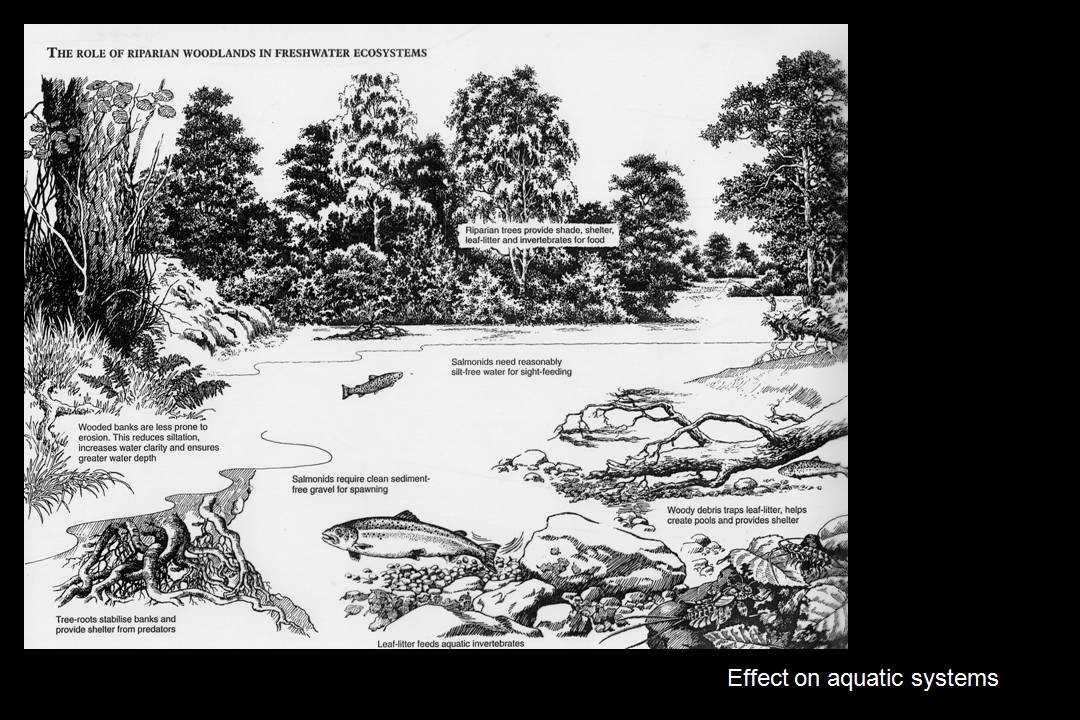
Perhaps the greatest affirmation of the principle of the project, was a 2009 site visit by international fisheries experts, in which, a Norwegian scientist opined that if Loch Garry were to be surrounded by deciduous woodland a twofold increase in fish food items could be expected. The general and strategic import of this should not be lost in a situation where there has been massive deforestation in the Highlands, there is a growing awareness of the multiple benefits of reforestation, especially in riparian areas, and where such a process would fit in well with government policy on climate change reduction. Riparian woodland restoration around hydro reservoirs is a multiple win-win scenario in everything from positive public image for the proprietors, right through to native wildlife and anglers. Here, the national parks could play a lead role in further and more extensive demonstration projects around reservoirs such as Loch Cuaich, and Loch an-t-Seilich in the Cairngorm National Park and Loch Sloy in the Loch Lomond and Trossachs National Park.
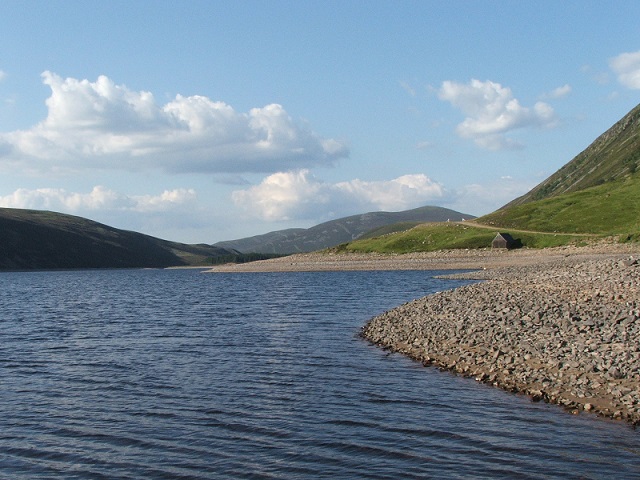
However useful this indirect source of organic material suitable for aquatic invertebrates might be, the challenge remains to find a direct in-loch plant source capable of surviving the annual water fluctuation regime. Bearing in mind the long term ( almost 100 years in some cases) persistence of the barren draw-down zone, both in Scandinavian and Scottish hydro reservoirs and the obvious lack of widespread re-colonisation by native plants, this would appear, at first hand, to be an intractable, if not irresolvable problem. However, following a study tour of Icelandic forests in 1981, I became aware of a wild Alaskan species of lupin (Lupinus nootkatensis) and its role in rehabilitating eroded gravel/sand soils.
Further, I noticed that it colonised the upper margins of lake shores, below the high water mark. Subsequent background research and some examples in riverine gravels in Scotland, revealed that the winter dormancy period of this plant rendered it capable of tolerating periods of inundation. The potential applicability to the annual water amplitude regime in Scottish hydro-reservoirs rapidly sprang to mind. The question being, would it tolerate several months of inundation?
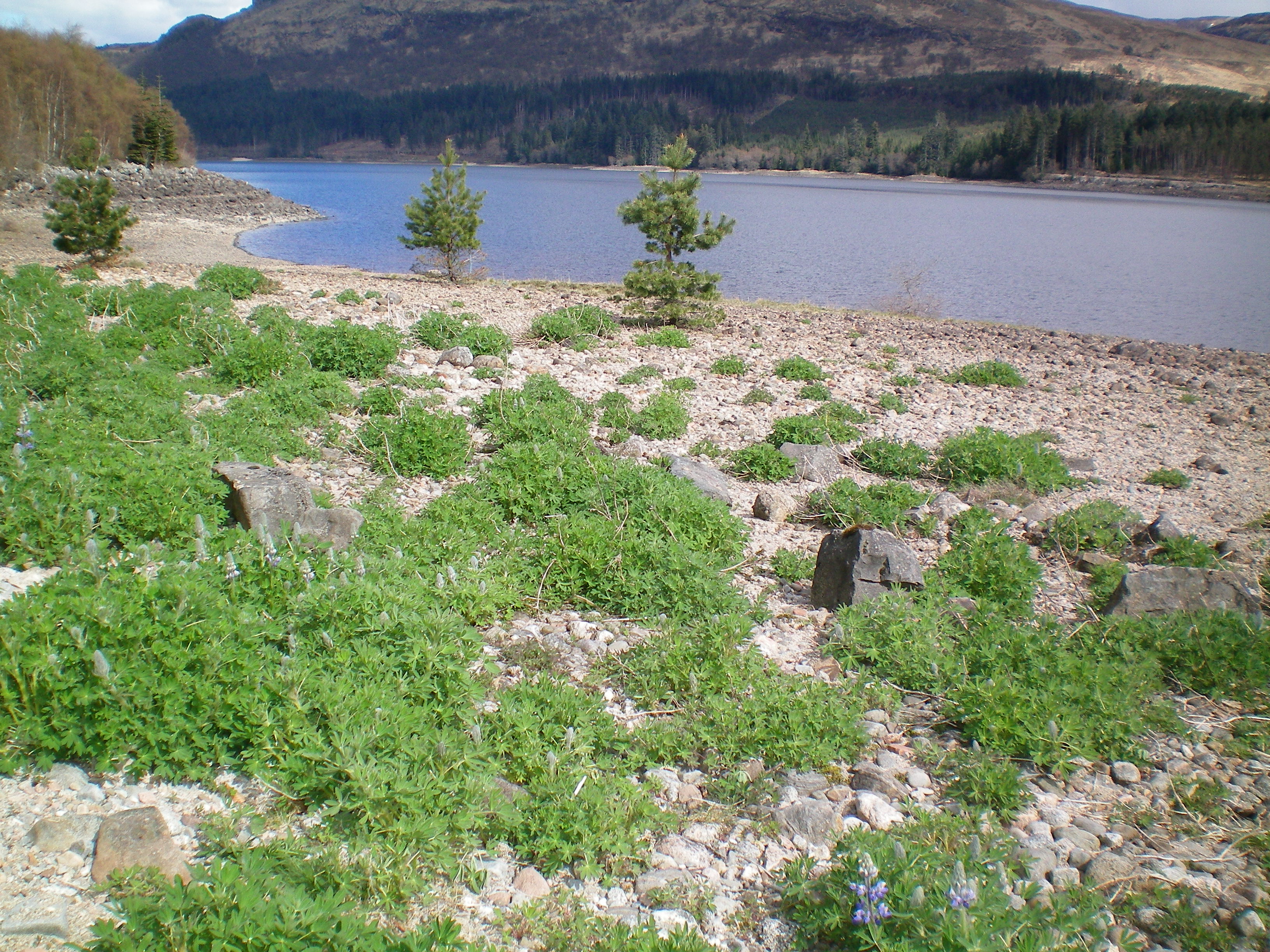
Finding an answer had to wait until potential test sites were found which were relatively free from grazing by deer and sheep (Loch Garry being ruled out on that basis) That took 20 years of frustration! Despite the small scale and short duration of the tests, 10 years of the experiment have indicated that the lupin will establish and maintain viability under several metres of water for 4-5 months, the key issue being where the water level is at the time winter dormancy breaks. There is the annual potential here for several metric tonnes of highly palatable invertebrate food per hectare and, as the lupin is a legume, 50-100kg of biologically available natural Nitrogen. The potential in improve fish production is strikingly obvious and combined with the input of tree leaf litter, offers quite a profound change in the perception of the capability of hydro-reservoirs to sustain more fish, indeed other aquatic or terrestrial wildlife and economic activity dependent upon them. Using an exotic species to benefit a range of native terrestrial and aquatic species (from molluscs through to birds and mammals) is of course a controversial argument and one laced with bio-xenophobia, but we should bear in mind that hydro reservoirs have no direct equivalent in nature and represent a man-made environment that has been devastatingly altered from the original. Repair work is now required.
This is an area where our National Parks, if proper National Parks, would take a lead.
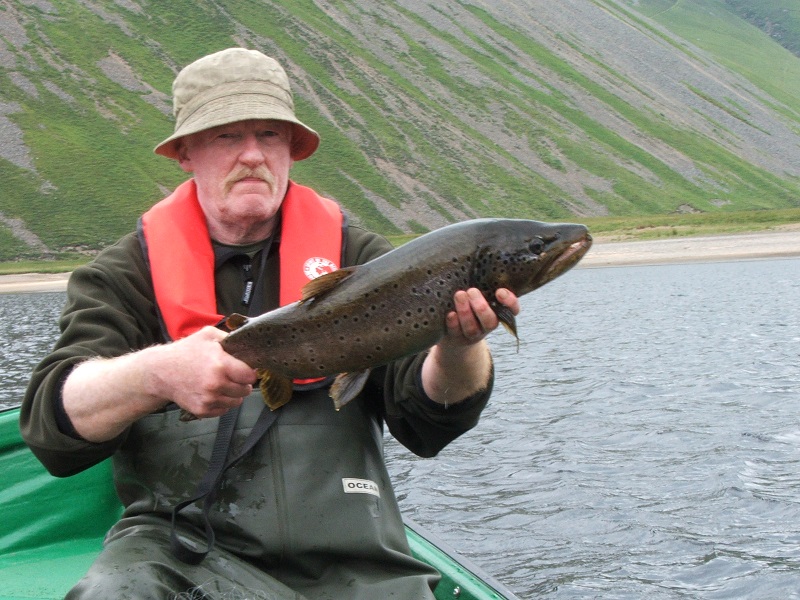
I firmly believe that not all non-native species are bad, however have trails been carried out on Alakan lupines to show that they won’t become invasive?
More generally I feel that nothing comes without some environmental impact and as such large hydro lochs with as much mitigation as possible are justified as they are the only large scale source of power on demand and play an important role in providing power to meed increases in demand at peak times. That said there has to be a limit and I certainly wouldn’t be in favour of any new schemes.
All power generation methods currently in use have environmental impacts. There are no free power lunches. Luckily the mitigation measures I’ve suggested for hydro are largely positive for the environment. The Nootka Lupin has been in Scotland for well over a 100 years and there are no permanent lupin-dominated areas. This is because it is a light demanding pioneer species with a low competitive ability against trees and vigorous ground vegetation. It is also highly palatable when young and is grazed out easily. It is however well adapted to erosion sites and barren morainic areas. The peculiar totally anthropogenic situation in the hydro lochs is also suitable for them and it is in rehabilitating this zone that they have a particular role to play. I agree, the days of the big hydro dams are over.
Some interesting information unfortunately marred by uninformed ranting against renewables and “green” priorities (rather strange in an article concerned with environmental harm). “Baseload” for example is a rather meaningless concept in the highly dynamic smart grids of the future and intermittency is not a problem when we can decouple production and consumption both temporally and geographically.
There is a real debate to be had about where to put vital new renewables developments and how to build them with minimum impact. These decisions can only be made with clear, accurate information. Accusing people who are attempting to address a global environmental catastrophe of religious fervour should immediately disqualify you from that debate.
PS: To site admin: every time I post a comment the text is split into columns. Longer posts have so many they become almost unreadable. Is this something to do with my computer or yours?
Sorry it’s a glitch that I have not worked out how fix but leaving out return sorts it. In mountain hut but will fix when back to laptop
thanks for proving my point–good rant, there Noel
Yeah, Noel. Erm, your last sentence is the exact “religious fervor” the man was referring to. Denying someone’s rights to debate because you disagree with them is the opposite of healthy scientific discourse and reflects an adherence to a belief system that ventures into the religious realms. Accepting that there are real world consequences for every environmental action, whether without regard for it or whether in an attempt to save it, is a good place to start for b being a reasonable person.
Thanks Chris, good to know that people are still picking up on this post. All the more urgency now with massive pump storage schemes with even more devastating impacts, now being proposed for the Highlands.
Is there any research of note on the impacts micro-hydro schemes in small feeder riverine systems, please?
Hi Callum, I don’t think so but will check with a couple of freshwater experts I know. If I am this, this is extraordinary given the number of hydro schemes which have been developed across Scotland. There is research of course into impact of the older and larger post-war schemes the findings of which could be applicable but if so, given that some of those findings are about the massive impacts these schemes have had, it appears that these have not been considered by the Planners. I asked the LLTNPA for a complete list of research they have commissioned in last five years and received this earlier in month (and a year of effort) and there is no research on that into any aspect of hydro. Our National Parks should, in my view, been leading way on this.
Hi, Callum – you could try contacting some of the newer companies installing micro run-of-river systems; the one I know of is Mannpower Hydro but there will be others. Mannpower has a number of schemes in Scotland and should be aware of any such research.
Good heavens. What an astonishing story. We have just walked round Loch Garry – and been astonished. Water is flowing IN FROM BOTH ENDS. Was it a proper loch (i.e. the repository for rain which fell in its catchment area) before the hydro scheme ‘ tunnel to Loch Erricht? It’s water level is currently about twenty-five feet below what it should be and the ‘shore’ is fifty yards from where it should be. We wondered about the little plantations on the north side … how desperately sad to read about their origin and intention. To use slightly less than scientific terminology (sorry!) WTF IS HAPPENING?
Well, Paddy, I have often asked that question since I began studying Loch Garry way back in 1973. Aye, it was a natural loch modified into a hydro reservoir in 1937. Its maximum fluctuation level is just under 10 metres, which is well above the 5 metres usually regarded as the death level for most of the larger aquatic invertebrates. The last few years have seen the water levels held very low and this appears to be the same in other hydro-reservoirs, I would think to maximize the money coming in from supplying the grid. The original main inflow is at the Rannoch end and the outflow at the Dalnaspidal and it does still flow out there at high winter water levels, but during the summer the diverted water from one of the major streams flows–IN at this end. As I’ve said elsewhere ‘there ain’t no free renewable energy lunches ‘
Paddy et al, you can see more commentary with photos on Facebook Rewilding Scotland etc.
I just walked up to Loch Treig and was so shocked by the sight that I found this site in an attempt to find an explanation for myself as to what was going on.
The Loch seems to have lost most of its water ! It looks horrendous . I am not an ecologist, biologist, hydro-engineer or fisherman but something that looks that terrible cannot be good.
I don’t understand how a hydro-electric scheme can work with no apparent water. I don’t remember lochs looking like tis when i was wee.
There appeared to be a small stream of water coming out of a tunnel ? from Loch Laggan. I guess it looks the same ?
Is it not possible to keep some balance: produce some electricity but not empty the Lochs and destroy the ecology / beauty of the landscape ?
Surprised this doesn’t get more debate
Well, I’ve been trying Richard http://www.andywightman.com/archives/3291 We can keep spreading the word to get more people aware
what’s it all for anyway? You can check the contribution hydro makes here http://www.gridwatch.co.uk